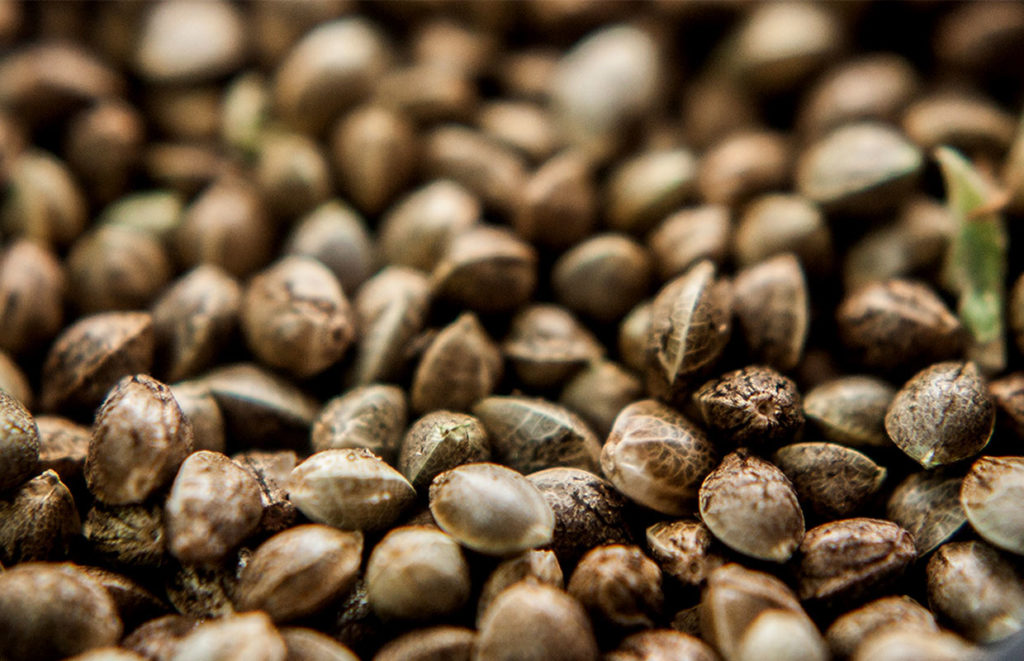How to Choose the Best Seeds for Planting Cannabis

There are all kinds of techniques people use when it comes to growing premium bud. Some people have their tried-and-true methods that they swear by while others are still in the trial-and-error period of their growing journey. Regardless of skill level, when it comes to growing a flourishing crop, the first place to begin when choosing to grow cannabis plants is with knowing how to properly select quality seeds.
Seeds that are not mature are typically small with a greenish hue and soft shell. Good, healthy seeds will be more greyish to brown with speckles and have a glossy appearance free from cracks. They are typically bigger in size as well. Seeds that are very dark or near black and appear to be dull may be old. To avoid immature seeds or aged seeds, try not to purchase seeds that have recently been harvested as well as those that have been kept in storage for long amounts of time.
Fresh seeds have a high germination rate that drops dramatically over time — from 90 percent down to 20 percent after three or four years. Excellent seeds are the cornerstone of successful plant growth because each one contains the genetic material that determines certain characteristics like size, shape and potency.
The strain of the seed determines what type of effects will be experienced after consumption. Indica and sativa are the two main strains that have distinct characteristic. Indica strains are known for their physical effects, with a noted body high and deep relaxation being the most commonly reported feelings, while sativas provide a cerebral buzz often associated with increased sensitivity to sights and sounds. Most seeds are hybrid strains that are either more indica-dominant or sativa-dominant.
It’s helpful to consider how long it will take plants to grow before picking out seeds. After deciding whether to grow indoors or outdoors, calculate the amount of time estimated for a plant to come to full maturation. Most plants take between seven and nine weeks until they are ready to be harvested, although indica plants tend to grow a little bit faster than sativas.
Deciding on a location for where the plants will grow make a huge difference in the success of failure of a crop. Seeds must be properly suited for the intended growing environment. There are benefits and drawbacks to both indoor and outdoor growing. Conditions for indoor plants are typically more temperate because they aren’t subject to fluctuating weather, but can be a financial burden due to high electricity bills from artificial lights. Growing plants outdoors helps cut costs by utilizing the sun as a free power source but leaves plants more susceptible to bugs and pests.
There are several advantages to growing plants from seeds. Cloned plants can transfer diseases to the next generation of plants whereas seeds are free from viruses, diseases and pests. Plants grown from seeds also exhibit slight genetic variation, so growers can choose the best plants out of a crop instead of possibly growing uniformly mediocre plants from a single mother plant.
Lastly, it’s important to make purchases from a reputable source or dealer who specializes in providing fresh, mature seeds. Because growing cannabis is an investment of time and money, it’s worth the effort to track down the best seeds commercially available. Once a trusted company is located, practice careful consideration, high selectivity and patience before making any choices. Being picky during this process will definitely pay off.
420 Intel is Your Source for Marijuana News
420 Intel Canada is your leading news source for the Canadian cannabis industry. Get the latest updates on Canadian cannabis stocks and developments on how Canada continues to be a major player in the worldwide recreational and medical cannabis industry.
420 Intel Canada is the Canadian Industry news outlet that will keep you updated on how these Canadian developments in recreational and medical marijuana will impact the country and the world. Our commitment is to bring you the most important cannabis news stories from across Canada every day of the week.
Marijuana industry news is a constant endeavor with new developments each day. For marijuana news across the True North, 420 Intel Canada promises to bring you quality, Canadian, cannabis industry news.
You can get 420 Intel news delivered directly to your inbox by signing up for our daily marijuana news, ensuring you’re always kept up to date on the ever-changing cannabis industry. To stay even better informed about marijuana legalization news follow us on Twitter, Facebook and LinkedIn.




